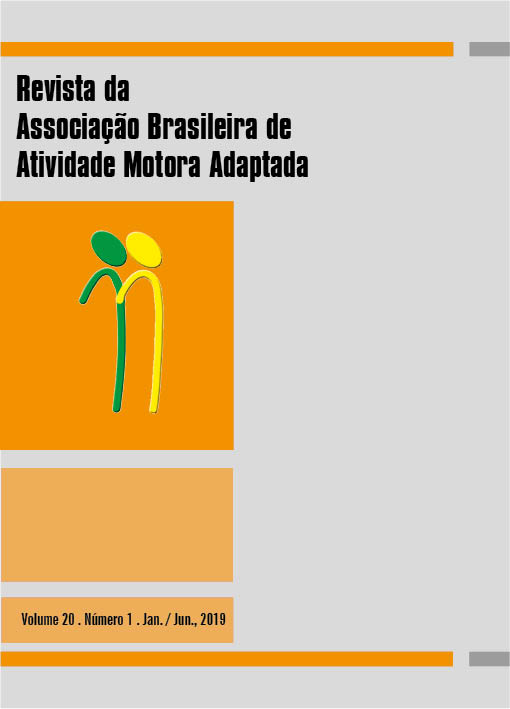PHYSICAL EDUCATION CONTRIBUTION TO THE MOTOR AND SOCIAL DEVELOPMENT OF A STUDENT WITH AUTISM
DOI:
https://doi.org/10.36311/2674-8681.2019.v20n1.07.p71Keywords:
Educação Física. Desenvolvimento Motor e Social. TEA.Abstract
From the perspective of education, the school must be set up as a space for everyone.
A place where students can develop knowledge from their own abilities and can express their ideas freely contributing to the construction of the citizen even with their differences. Physical education as a mandatory curricular content is important for the development of the competencies of social relations and motor skills of all students, including those who present some deficiency or Autism Spectrum Disorder (ASD). Emphasizing that physical education is able to develop skills and identify specific needs of students by giving the necessary conditions for development contributing to the accomplishment of activities with self-reliance. Similarly identifying the importance of physical education for the motor and social development of students with autism. The purpose of this study was to identify, intervene and evaluate the motor and social action of students with ASD, seeking the contributions that physical education can offer to these people. The work process consists of a field study conducted in a camp with elementary school students from one municipality of São Paulo state. The information were collected through the EDM - Assessment Manual to Assess Children's Motor and Social Development, subsequently specific activities were performed, working the psychomotricity and finally, the tests were reapplied to verify if there was a contribution in the motor development of the children. We could conclude that physical education has priorities to contribute to the motor and social development of students with ASD and through the intervention of psychomotricity actions we could perceive a significant improvement in all areas of development and social needs of people with this disorder, including inclusive classes.
References
FERREIRA, C. A. M. & THOMPSON, R. (Orgs.). (2002). Imagem e Esquema Corporal. São Paulo: Lovise.
MACHADO, J.R.M.; NUNES, M.V.S. 100 Jogos Psicomotores: uma pratica relacional na escola. 3ª Edição. Rio de Janeiro. Wak editora,2017.
MARANHÃO, B. S. S; SOUZA; MOISES S. S. R. de. Educação Física, Transtorno do Espectro Autístico (TEA) e inclusão escolar: Revisão Bibliográfica. Universidade do Pará, 2012. Disponível em: http://paginas.uepa.br/ccbs/edfisica/files/2012.2/BRENDA_MARANHO.pdf
PCN - Parâmetros Curriculares Nacionais : Educação física / Secretaria de Educação Fundamental. – Brasília MEC/SEF, 1997.
RODRIGUES, C. G. Educação Física infantil: motricidade de 1 a 6 anos. São Paulo: Phorte, 2005ROSA NETO F. Manual de Avaliação Motora. Porto Alegre: Artmed; 2002.
ROUDINESCO, E.; PLON, M. Dicionário de Psicanálise. Rio de Janeiro: Editora Zahar, 1944.Disponível em:https://drive.google.com/file/d/0BxDgYt_K04Q3RkZUTnlDd0RpUHc/viewO/
UNESCO. Declaração de Salamanca.Sobre Princípios, Políticas e Práticas na Área das Necessidades Educativas Especiais. Brasília: MEC,1994. Disponível em: <http://portal. mec.gov.br/seesp/arquivos/pdf/salamanca.pdf>.




